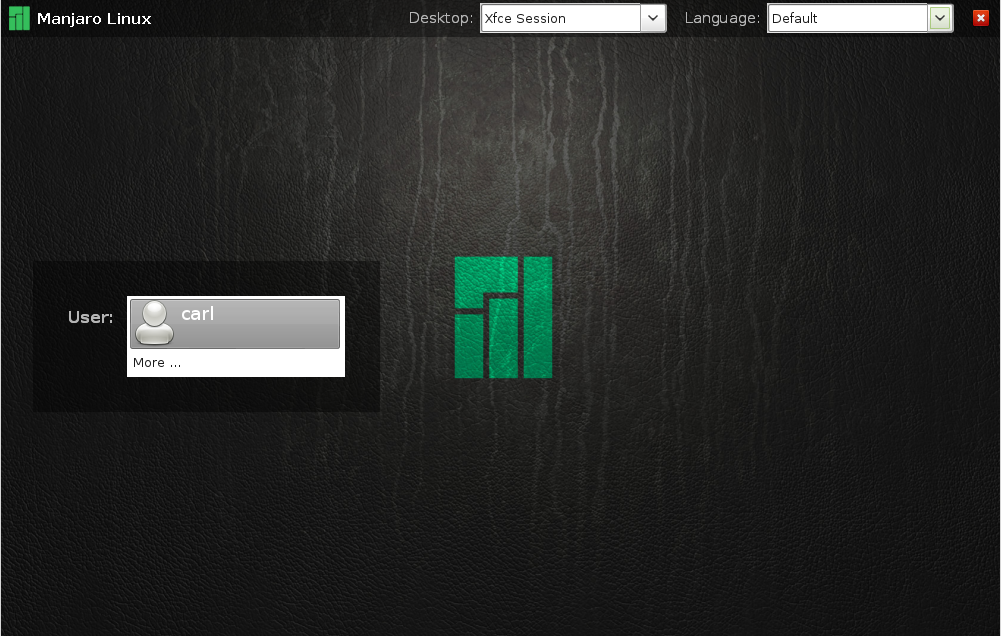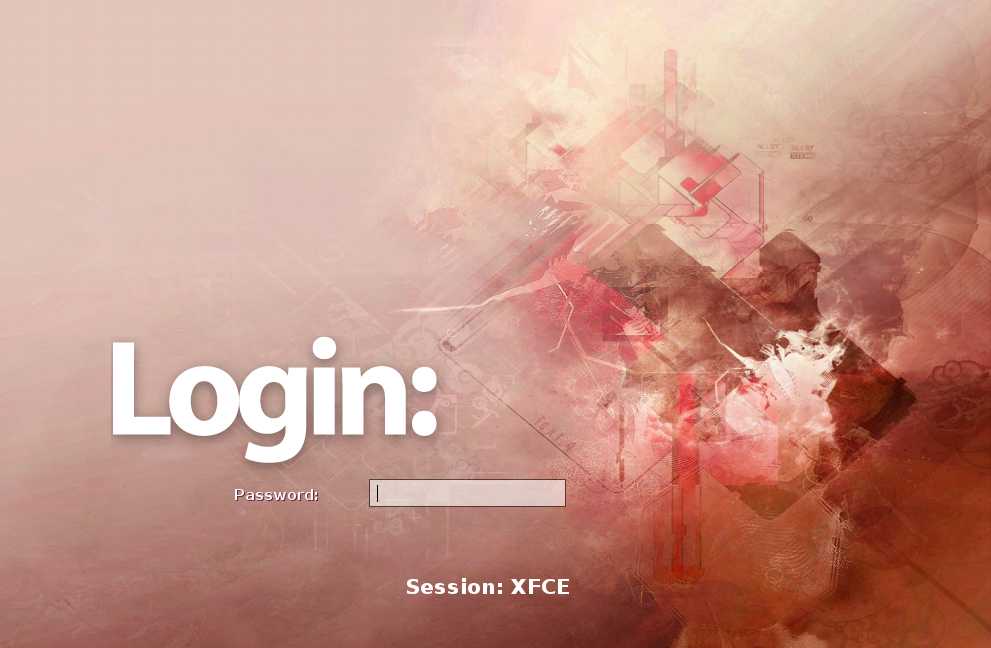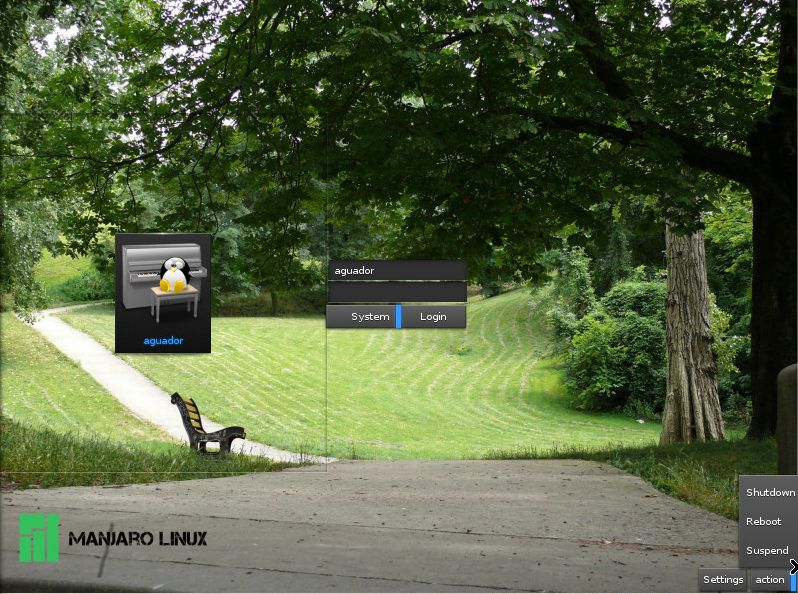Difference between revisions of "Install Display Managers"
Views
Actions
Namespaces
Variants
Tools
imported>Aguador |
imported>Aguador |
||
| Line 261: | Line 261: | ||
<br clear="all" /> | <br clear="all" /> | ||
=Troubleshooting= | =Troubleshooting= | ||
Revision as of 12:12, 24 April 2016
Overview
Display Managers are used to provide login screens, and therefore serve as protective security barriers to prevent unauthorised access to your system. They are also referred to as Login Managers. As with different desktop environments, different display managers will require different system resources to run, and will provide their own unique styles, interfaces, and features. Commonly shared features - particularly in respect to the selection of display managers listed below - include customisation/theming, automatic login, and the selection of multiple desktop environments.
MDM
MDM - the Mint Display Manager - is designed for use with any desktop environment. It supports theming, automatic login, and the automatic detection and use of multiple desktop environments. Ported over from Mint and adapted by the Manjaro Team, this is the default display manager for the XFCE flavour. It is also highly recommended for newcomers, particularly as it comes with a very easy user-friendly app to configure and change its appearance... and lots of themes to go with it.
MDM can be installed by entering the following command:
sudo pacman -S mdm
To enable MDM in Manjaro 0.8.2 or later (or if Plymouth has been removed), enter the command:
sudo systemctl enable mdm.service -f
To enable MDM in Manjaro 0.8.1 or earlier (or if Plymouth has been added), enter the command:
sudo systemctl enable mdm-plymouth.service -f
GDM
GDM - the Gnome Display Manager - is designed for use with Gnome 3. It supports theming, automatic login, and the automatic detection and use of multiple desktop environments. Specifically for those using Gnome 3, a configuration application is also available to easily customise the login screen and enable automatic login without having to edit any configuration files.
GDM can be installed by entering the following command:
sudo pacman -S gdm
Alternatively, GDM can also be installed along with its own configuration application by entering the following command:
sudo pacman -S gdm3setup
To enable GDM in Manjaro 0.8.2 or later (or if Plymouth has been removed), enter the command:
sudo systemctl enable gdm.service -f
To enable GDM in Manjaro 0.8.1 or earlier (or if Plymouth has been added), enter the command:
sudo systemctl enable gdm-plymouth.service -f
KDM
KDM - the KDE Display Manager - is designed for use with KDE. It supports theming, automatic login, and the automatic detection and use of multiple desktop environments. If the full KDE desktop environment has been installed, then KDM should already be available to be enabled.
Otherwise, to install KDM, enter the command:
sudo pacman -S kdebase-workspace
Additional themes for KDM can also be obtained by entering the command:
sudo pacman -S archlinux-themes-kdm
To enable KDM in Manjaro 0.8.2 or later (or if Plymouth has been removed), enter the command:
sudo systemctl enable kdm.service -f
To enable KDM in Manjaro 0.8.1 or earlier (or if Plymouth has been added), enter the command:
sudo systemctl enable kdm-plymouth.service -f
LXDM
LXDM - the Lightweight X-Windows Display Manager - is designed for use with any desktop environment. It supports theming, automatic login, easy selection of multiple languages, and the automatic detection and use of multiple desktop environments.
To install LXDM, enter the command:
sudo pacman -S lxdm
To enable LXDM in Manjaro 0.8.2 or later (or if Plymouth has been removed), enter the command:
sudo systemctl enable lxdm.service -f
To enable LXDM in Manjaro 0.8.1 or earlier (or if Plymouth has been added), enter the command:
sudo systemctl enable lxdm-plymouth.service -f
SLiM
SLiM - the Simple Login Manager - is designed for use with any desktop environment. Used by Manjaro Openbox and popular with Arch users, it supports theming, automatic login, and use of multiple desktop environments. Since version 1.6.2, SLiM now supports the automatic detection of desktop environments. It may be necessary for users who have installed Manjaro 0.8.7.1 and earlier to manually edit some configuration files to get it to work.
To install SLiM, enter the command:
sudo pacman -S slim
Additional themes for SLiM can also be obtained by entering the command:
sudo pacman -S slim-themes
To enable SLiM in Manjaro 0.8.2 or later (or if Plymouth has been removed), enter the command:
sudo systemctl enable slim.service -f
SDDM
SDDM is a relatively new and lightweight QML-based Display Manager for use with any desktop environment. It supports theming, automatic login, and the automatic detection and use of multiple desktop environments.
To install SDDM, enter the command:
sudo pacman -S sddm
To enable SDDM in Manjaro 0.8.2 or later (or if Plymouth has been removed), enter the command:
sudo systemctl enable sddm.service -f
LightDM
LigtDM is a light displaymanager without depencies of gnome. With the right greeter it works but need some manual intervention to do it, here some steps.
sudo pacman -S lightdm lightdm-another-gtk-greeter lightdm-another-gtk-greeter-themes accountsservice
First configure the Greeter in /etc/lightdm/lightdm.conf:
sudo nano /etc/lightdm/lightdm.conf
[SeatDefaults] # This sets the lightDM-another-greeter: greeter-session=lightdm-another-gtk-greeter # Depends on Desktop it Sets to your standard desktop: user-session=xfce
LightDM.conf is configured. Now we have to configure the greeter. This a few lines you have to search mostly there you see "#" before it.
sudo nano /etc/lightdm/lightdm-another-gtk-greeter.conf
[appearance] # Greeter theme. Themes are located in “themes” directory (“/usr/share/lightdm-$"): greeter-theme=gtk-greeter-160 # Background color (#RRGGBB) or image: background=/usr/share/backgrounds/xfce/alone.jpg # User styles file: #css-file= # Logo: “file_path” or “#icon_name” #logo= # Gtk theme to use (in this case "greenbird" theme is used): gtk-theme=greenbird # Icons theme to use: icon-theme=kotenza #Not so important font setting: font-name=comfortaa
when all is done you can setup user icons.
sudo systemctl enable accounts-daemon look in /var/lib/AccountsService/users/ for your name if not so then you have to make it.you have to an text file with your username. with this info on board.
[User] Language=nl_BE.utf8 XSession=xfce Icon=/var/lib/AccountsService/icons/<username>.png
you have configured the the icon stuf.
make sure you install xorg-server-xephyr
then u can do lightdm --test-mode to test how it works you get a black window with a patience you see if it working or not. are all certain of it.
Disable the running display manager forst with
sudo systemctl disable mdm # for example
then
sudo systemctl enable lightdm
if you take another greeter it would work te same basicly for more infor you can read this further. -> [1]
Entrance
Entrance is a configurable DM designed for the Enlightenment desktop environment which allows selection of multiple themes, icons, and the enabling of virtual keyboards. The default installation offers a wallpaper with randomly displayed icons for each user account, although a fixed icon can be specified and custom icons compiled and added. When multiple Entrance themes are installed it is possible to have a default theme displayed on startup and individual themes that appear for each user as they begin login.
Entrance is available in the Arch User Repository (AUR) and may be installed with yaourt using the following command:
yaourt -S entrance-git
Troubleshooting
Display Manager Crashes (SystemD)
After Arch and other Arch-based derivatives introduced a new internal process called SystemD relatively recently, many display managers would crash upon attempting to log out and back in multiple times. While this should have been resolved at the time of writing, more experienced users encountering this problem can manually configure their display manager by editing the /etc/pam.d/[display manager] configuration file.
For example, where using SDDM, users would edit /etc/pam.d/sddm. For SLiM (already patched), it would be /etc/pam.d/slim, and so on. Once open, just add the following line at the end of the configuration file to solve the issue:
session required pam_systemd.so
Display Manager service cannot be disabled
If an old Display Manager service cannot be disabled with the command
sudo systemctl enable XXXX.service -f
(replace XXXX with the name of the Display Manager you want to disable), please try to disable all Display Managers on your System by deleting the following file:
sudo rm /etc/systemd/system/display-manager.service
Attention: After deleting this file, ALL Display Managers have been disabled and your system boots to a text-based interface [2]. You need to install and enable a Display Manager in order to be able to log in with a graphical user interface.


